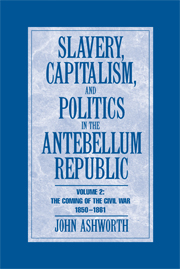Conclusion: Explaining the Civil War (2)
Published online by Cambridge University Press: 05 June 2012
Summary
When they went to war, northerners and southerners alike expected the conflict to be of short duration and foresaw little economic disruption. Both predictions proved hopelessly wrong. For the Confederacy, even more than for northerners, war was a devastating experience. Every significant feature of the southern economy was touched by the four years of bitter conflict and southern leaders were driven by economic as well as military necessity to employ ever more drastic measures and ultimately even to propose the arming of their slave population, an idea which, at the commencement of hostilities, would have struck virtually every white Confederate as utter lunacy. For the Confederacy, the war years were ones of increasingly severe economic dislocation, and for the overwhelming majority of her citizens, of unwontedly severe hardship.
As I have argued throughout this study, southerners had been responding, for many years, to a set of problems whose existence they could not clearly recognise, but whose effects they could not avoid. Secession was the most drastic and the most radical of all attempts to overcome the weaknesses of slavery. But for reasons we have already examined, northerners were not, in practice, willing to allow the southern states to go in peace, and so war quickly erupted. This placed the severest strain upon the southern economic and social systems and the weaknesses of slavery came back to haunt southerners and to wreak havoc upon the nation they were trying to establish.
- Type
- Chapter
- Information
- Slavery, Capitalism and Politics in the Antebellum Republic , pp. 628 - 650Publisher: Cambridge University PressPrint publication year: 2007



